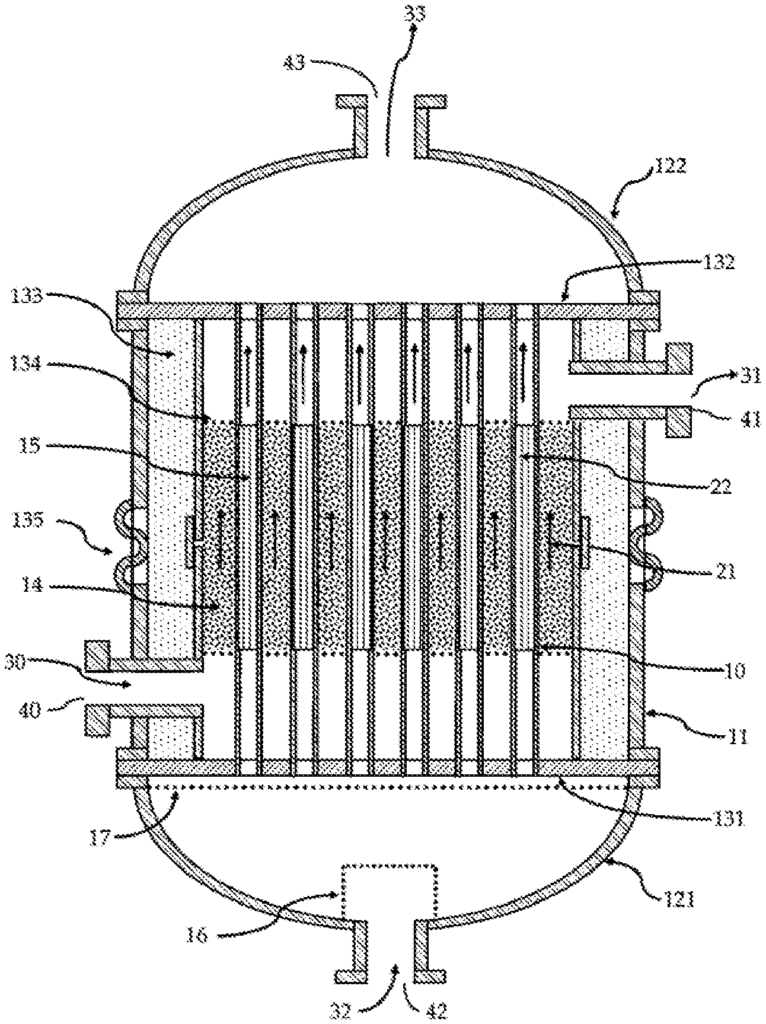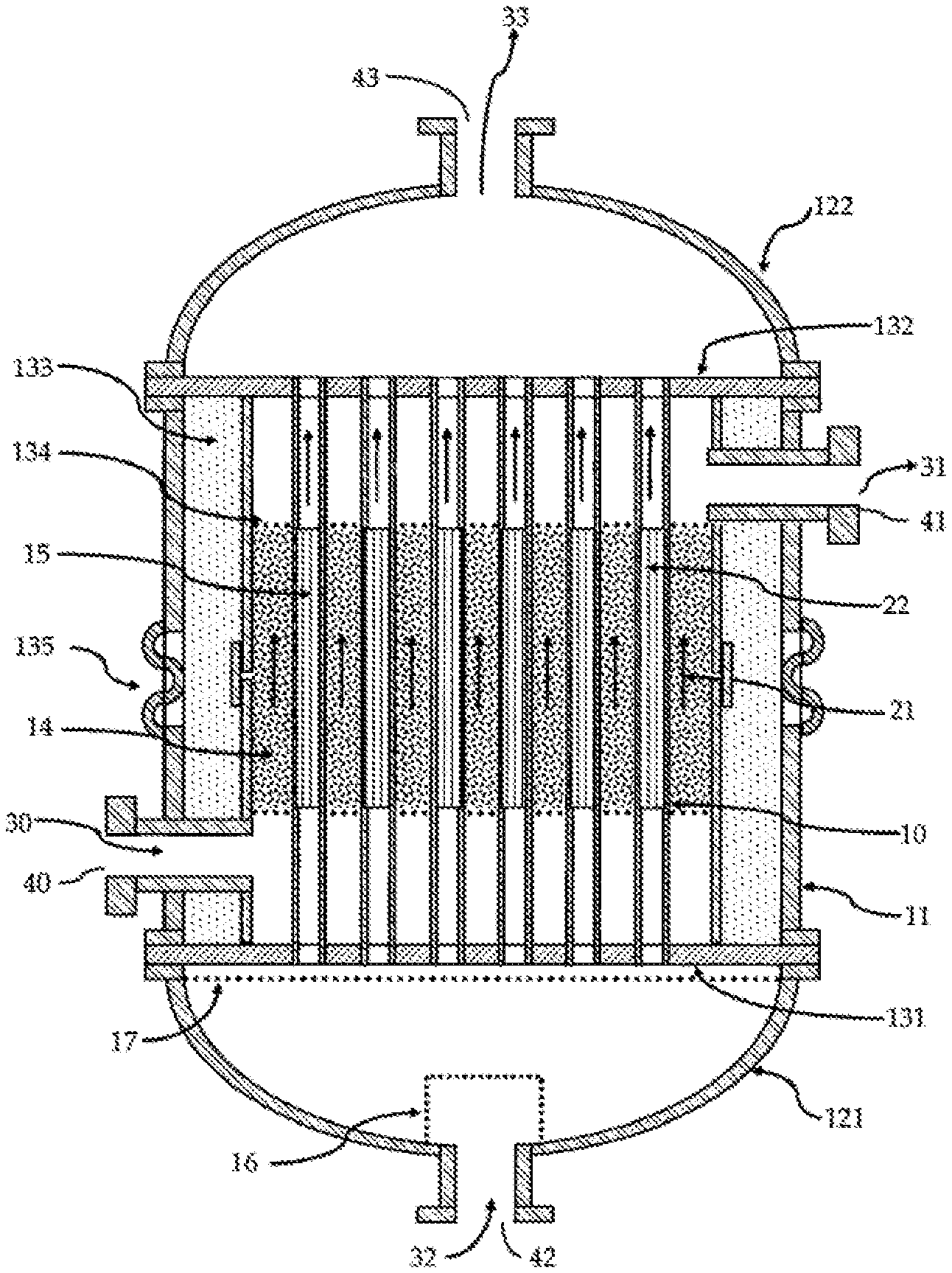Invented by Scenna; Richard, Gupta; Ashwani, The Government of the United States, as represented by the Secretary of the Army
The patent proposal at hand presents a groundbreaking solution to the challenge of reformation of high molecular weight hydrocarbon fuels, particularly addressing the limitations encountered in the non-catalytic partial oxidation process due to the high sulfur content and carbon deposition tendencies of such fuels. The technology outlines a method, system, and corresponding hardware to control the fuel reformation process, specifically targeting the optimization of reactant mixtures and operational conditions to enhance the efficiency of generating syngas—a mixture of hydrogen and carbon monoxide.
At the crux of this invention is the innovative method for controlling a fuel reformation reaction within a fuel reformation reactor. This involves precise control over several critical parameters: the amount of fuel, steam, and oxygen injected into the reactor, along with the reactor’s temperature. Furthermore, the method details adjusting the mixture rates of reactants to ensure an optimal reformation process. Such meticulous control aims to address the inefficiencies and challenges highlighted in conventional non-catalytic partial oxidation (POX) methods that historically suffer from incomplete fuel conversion and high soot formation due to unfavorable conditions.
The market potential for this technology spans several key sectors where high molecular weight fuels, such as kerosene-based jet fuels and diesel, are prominently used, including the commercial, defense, and power generation industries. The defense sector, in particular, stands to greatly benefit from this technology due to the predominant use of JP8 fuel, known for its high sulfur content and logistical convenience despite presenting significant reformation challenges. The technology’s ability to navigate sulfur content and prevent catalyst deactivation or soot formation makes it a promising alternative to traditional methods, potentially revolutionizing field operations by providing a more efficient and reliable source of syngas.
Commercial aviation and power generation sectors could also realize significant improvements in operational efficiency and environmental impact through this technology. By enhancing the reforming efficiency of jet and diesel fuels, this method could lead to cleaner combustion processes, reduced greenhouse gas emissions, and overall better fuel utilization. This stands in significant contrast to existing technologies, which suffer from efficiency losses and environmental drawbacks due to incomplete fuel conversion and the resultant pollution.
Moreover, this innovation plugs directly into the ongoing global shift towards cleaner energy sources. As industries seek to decarbonize and governments enact stricter environmental regulations, technologies that can efficiently convert traditional fuels into cleaner, more usable forms while minimizing waste and emissions will become increasingly valuable. The proposed solution’s potential for high reforming efficiency and reduced operational costs presents a compelling value proposition for stakeholders across these sectors.
What sets this patent apart is not only its timely response to the inherent limitations of current fuel reformation technologies but also its potential to catalyze significant advancements in energy efficiency and environmental sustainability. The technology’s applicability across diverse sectors, combined with the growing demand for cleaner energy solutions, underscores a broad market potential. With the right commercialization strategy, this fuel reformation control method could pave the way for a new era of fuel usage and management, positioning it as a critical player in the transition towards more sustainable energy systems.
# Harnessing the Future of Fuel: A Revolutionary Patent in Hydrocarbon Reformation
In an age where sustainability and energy efficiency take center stage, a breakthrough patent emerges, promising to revolutionize the way we harness and utilize traditional fuel sources. This patent outlines an innovative fuel reformation method designed to address the pressing challenges associated with the reformation of high molecular weight hydrocarbon fuels, such as those used in jet and diesel engines.
### The Science Behind the Patent

The crux of this patent lies in its unique approach to controlling the reformation of high molecular weight hydrocarbons through optimized temperature regulation and reactant mixture control within a fuel reformation reactor. Traditional non-catalytic partial oxidation processes have often fallen short due to inefficiencies such as incomplete fuel conversion, high soot formation, and challenges posed by the high sulfur content in many fuels used today.
The proposed method meticulously adjusts the ratios of fuel, steam, and oxygen introduced into the reactor while also maintaining optimal operational temperatures. By fine-tuning these parameters, the patent claims to significantly reduce the occurrence of soot and carbon deposition, common issues attributed to the incomplete oxidation of fuel molecules. The success of this process largely pivots on achieving a precise balance that promotes the most effective reformation reaction, leading to the production of syngas—a potent mixture of hydrogen and carbon monoxide, desired for its combustibility and efficiency.
### Unpacking the Methodology
A closer look at the methodology reveals a system designed for adaptability and precision. The injection of fuel, steam, and oxygen, along with the control of the temperature within the reactor, forms a harmonious system that capitalizes on the thermodynamic properties of the reactants. The proportioning of steam and oxygen, in particular, is critical. Too much oxygen, and the system risks overoxidizing; too little, and the reaction veers towards incompleteness. This delicate balancing act demonstrates the thoughtful engineering and scientific insight driving this patent.
### Implications of the Patent
The environmental implications of this patent are profound. By enabling more efficient conversion of traditional fuels into syngas with fewer by-products, this technology paves the way for cleaner energy generation methods. It offers a tangible solution to the problem of high sulfur content in fuels, which has been a significant barrier to efficient fuel use and has contributed to environmental pollution.
On an industrial scale, this technology could revolutionize sectors heavily reliant on high molecular weight hydrocarbon fuels, including aviation, maritime, and large-scale power generation. Its adaptability to various fuel types and the promise of improved fuel efficiency make it an attractive option for industries aiming to reduce their carbon footprint without compromising on energy needs.
### Conclusion
In conclusion, this patent marks a significant step forward in the quest for sustainable fuel utilization. With its innovative approach to fuel reformation, it addresses longstanding challenges and sets the stage for a future where energy efficiency and environmental responsibility go hand in hand. The implications for industry and the environment alike are vast, making this patent not just a remarkable scientific achievement, but a beacon of hope for a cleaner, more sustainable future.

Leave a Reply